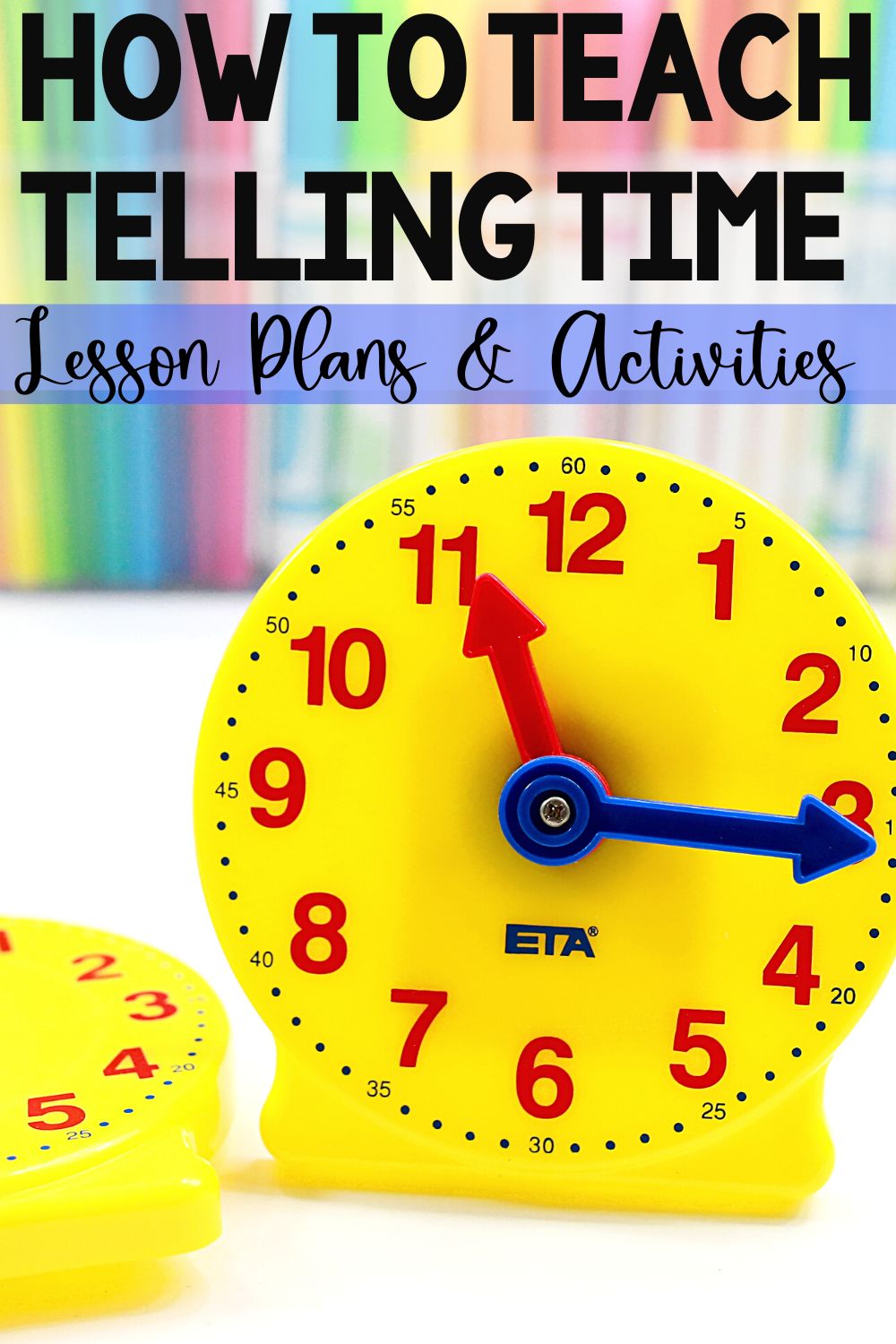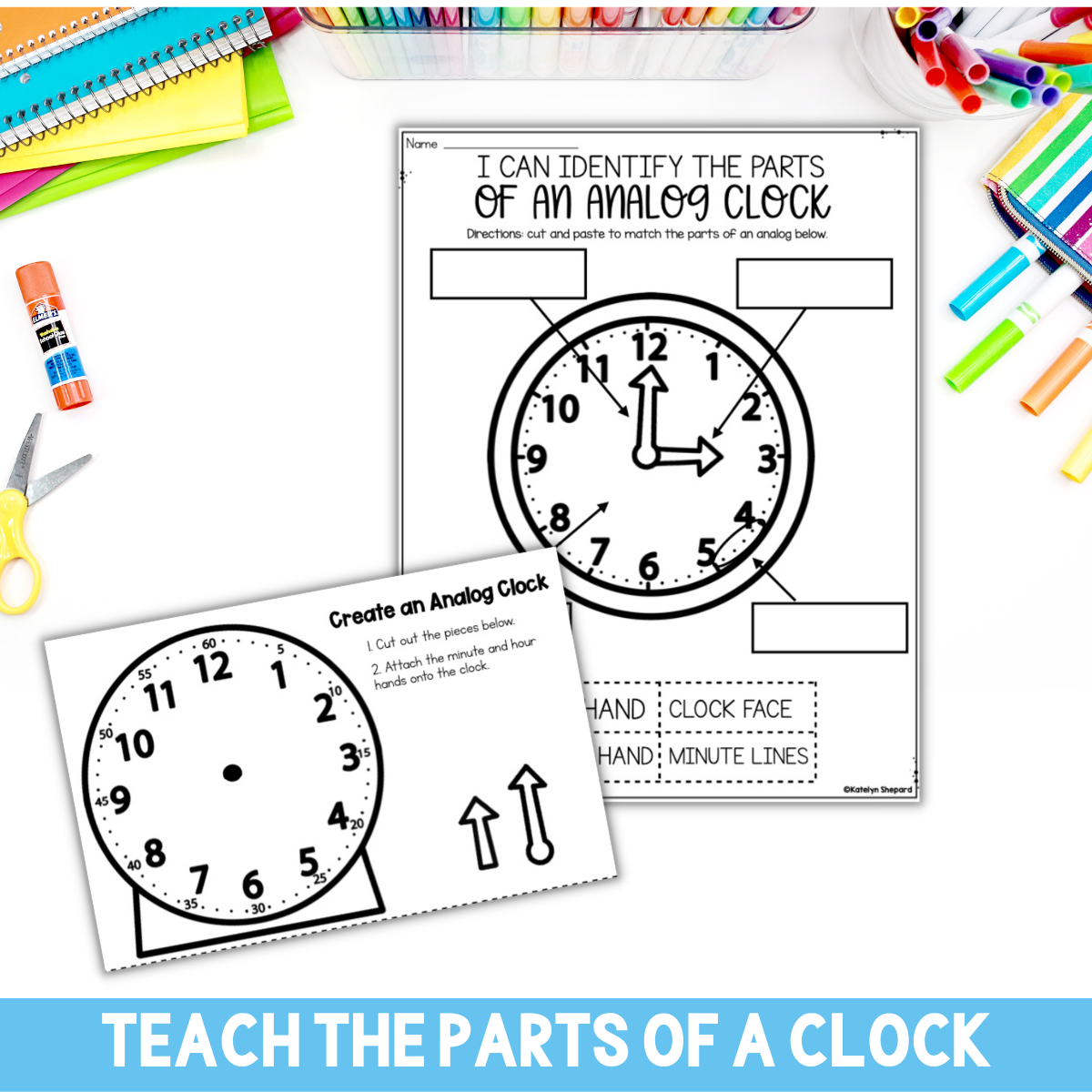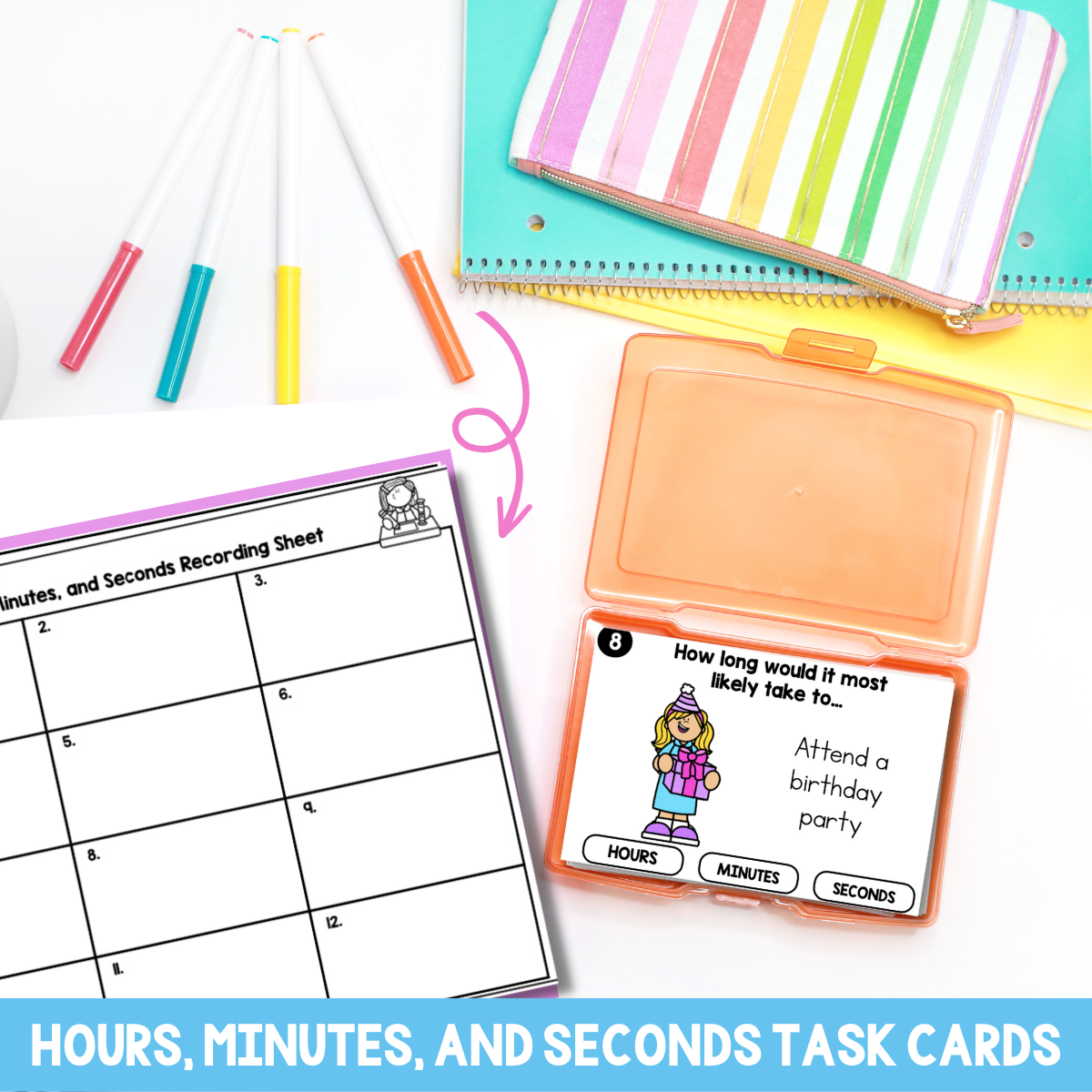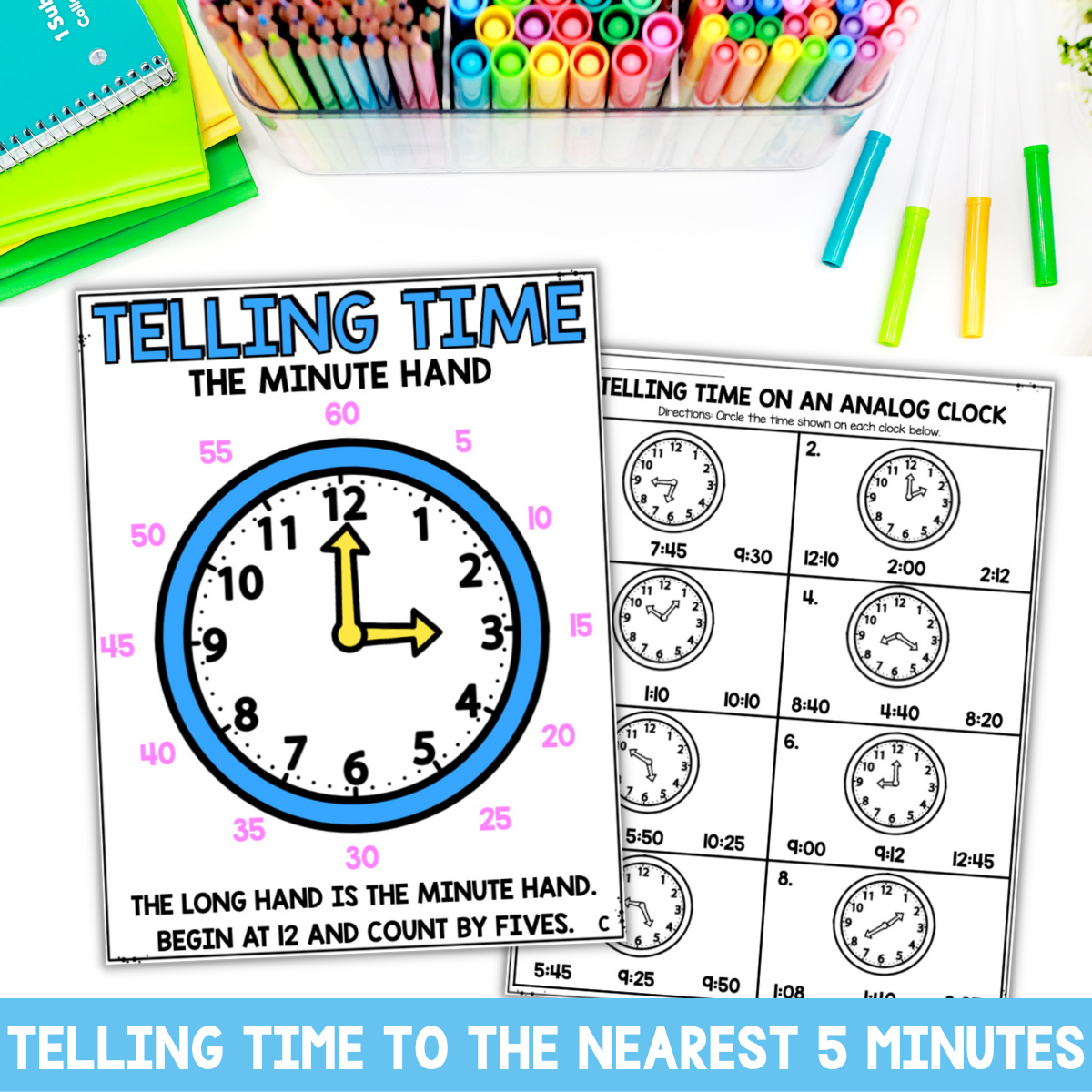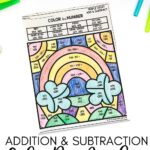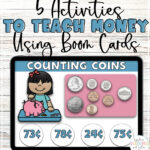How to Teach Telling Time: Telling Time Lesson Plans and Activities
Telling time is one of my favorite math skills to teach! It’s usually one of the easier skills to get students excited about because they use time each and every day. If you’re wondering how to teach telling time – this blog post is for you!
1.First, students must Understand the parts of a clock
Before diving straight into having students tell time, it’s important to spend some time teaching them about the parts of a clock. I don’t like to assume that students already have a full understanding of the hour or minute hand and so on, so we practice! I like to have students create their own analog clock so they can really become familiar with it. These also come in handy if you don’t have a class set of clocks on hand!
2. Teach the concept of hours, minutes, and seconds
Once students are familiar with the parts of a clock it’s time to teach the ways we can measure time. A short lesson on hours, minutes, and seconds helps students have a better grasp on the concept of time. This is important for everyday life and I’m always surprised at how many children don’t quite understand the difference between the three yet.
Inside of my Telling Time pack, you’ll also find task cards that students can do independently or with a partner to practice the time it would take to complete real-life activities.
4. Teaching A.M. and P.M.
Spend a little time teaching students the difference between A.M. and P.M.. Explain that each day the clock goes around all 12 numbers twice. Once during the A.M. times and a second time during P.M. times. I like to review different activities and when they would most likely take place, during A.M. or P.M. using a sort similar to the one mentioned above.
5. Teach Telling Time to the Hour and half hour
Now it’s time to teach students how to tell time to the hour and half hour on an analog clock. I always start with telling time to the hour because I feel this is the most straightforward, easiest concept to understand. When teaching to tell time to the half hour, make sure to spend some time explaining that the hour hand won’t be directly pointing to the “hour” number. Instead, it will be halfway between the current hour and the upcoming hour. Often, when students are asked to show a half hour on a clock they miss this crucial piece and draw the hour hand pointing at the current hour.
6. Teach Telling Time to the Quarter Hour
Depending on what grade you teach, you may or may not begin teaching time to the quarter hour. If your students are ready to learn quarter hours, you can explain that an hour is 60 minutes and 1/4, or one quarter of this is 15. So, every 15 minutes we can say it’s a quarter hour. I also explain that when the minute hand is on the 6, we know of that as half past the hour and when it’s on the twelve it becomes a new hour. So we learn a quarter past an hour and a quarter until the next hour.
7.Telling Time to the Nearest 5 minutes
When teaching students to tell time to the nearest five minutes, explain that the minute numbers go in increments of five on the clock. We count by fives when reading the minutes. An anchor chart like the one below is a great visual to have as students learn how to count minutes on a clock. Demonstrate moving the minute hand to different times (3:05, 3:10, 3:15, and so on). It’s important to point out and practice that as the minute hand moves to a larger number on the clock, the hour hand moves closer to the next hour. So often students will forget this step when showing times on a clock.
8. Practice Telling Time on an Analog Clock
The best way for students to learn how to tell time is to practice telling time! That’s why I wanted to give you a ton of activities to help students do just that. This telling time task card activity is a great way to give students plenty of practice telling time on an analog clock. Students will read the time on each clock, then write the time on their answer sheet.
You’ll find activities for each step mentioned above inside of my Telling Time Activities Pack. Inside you’ll also find these fun telling time color by number sheets. On the first, students must read each time (example: a quarter until seven) then, find the correct analog clock and color it to match the color code. On the second color by number sheet, students will read the time on each analog clock and then find that time and color the space using the color code provided. These are fun ways to change up learning how to tell time!
Telling Time Games
As a fun, whole class activity, you can play “Telling Time I Have, Who Has”. Students have a lot of fun with this game. The first student begins and reads the time on their card, then asks who has another time and so on.
You’ll find all the resources mentioned above as well as complete lesson plans inside of my Telling Time Activities Pack. It’s seriously a print and go unit that has all you need to get your students proficient in learning to tell time!
Are you working through the Measurement Standard? Check out this blogpost all about teaching student to count money by clicking here!

